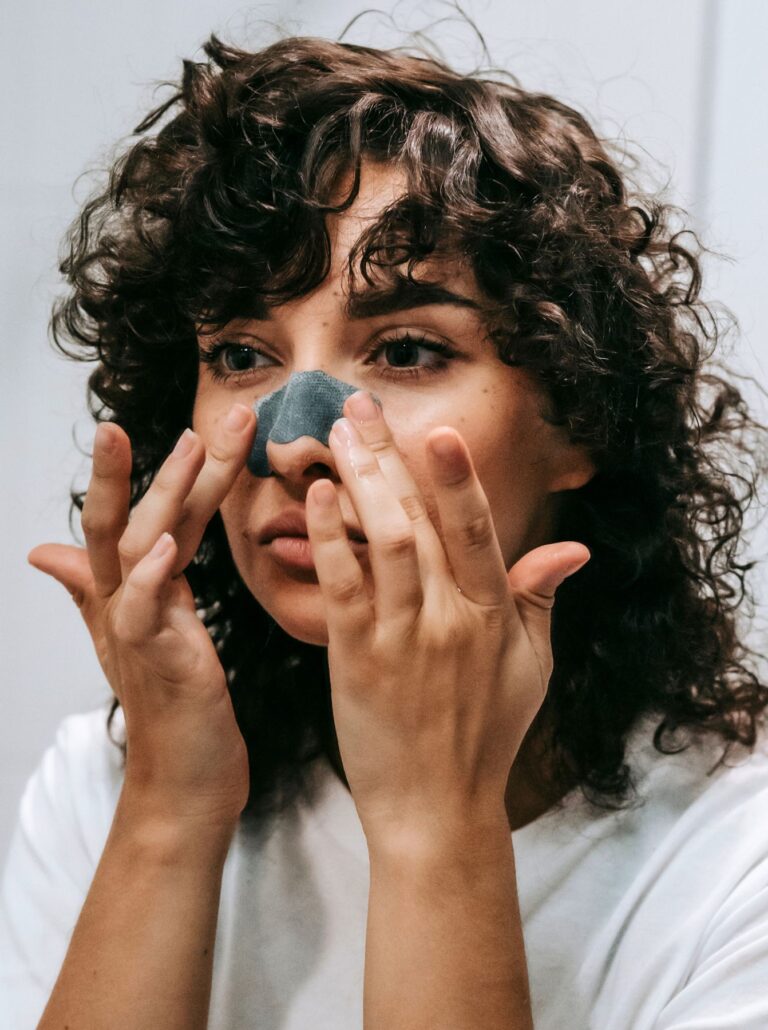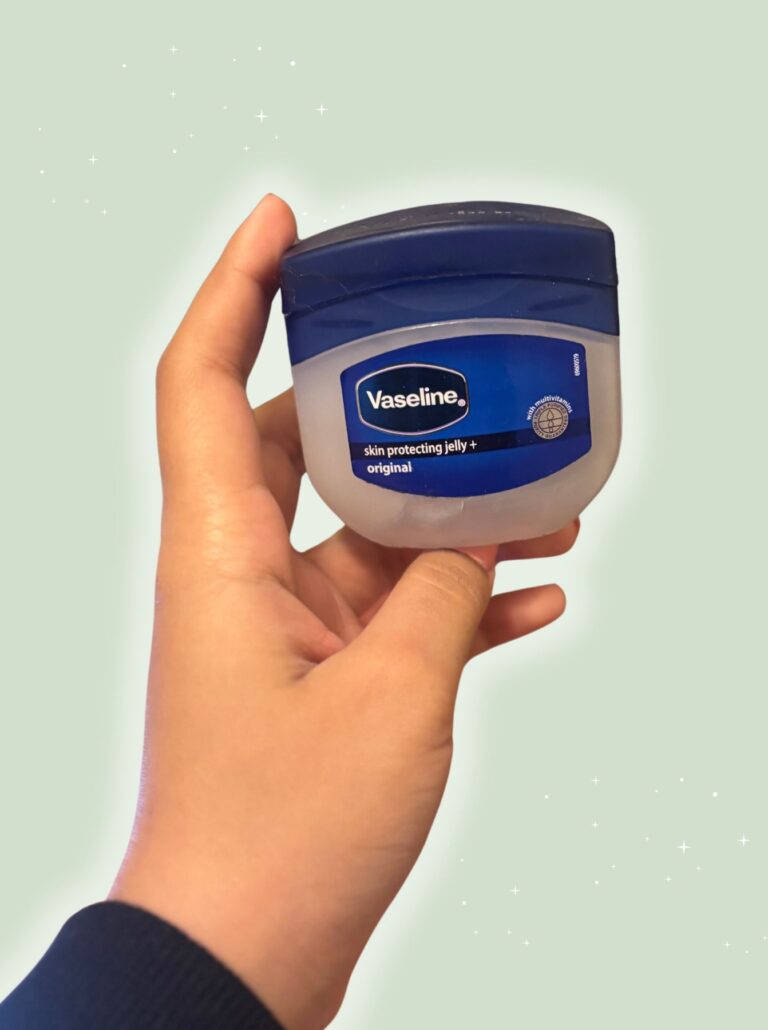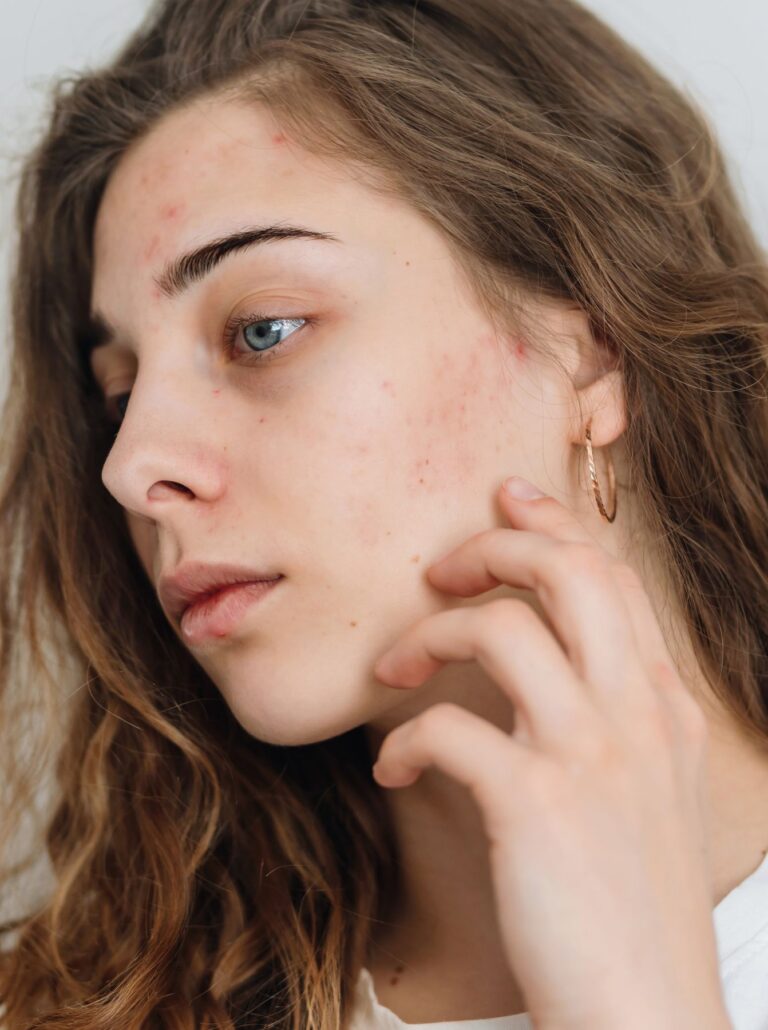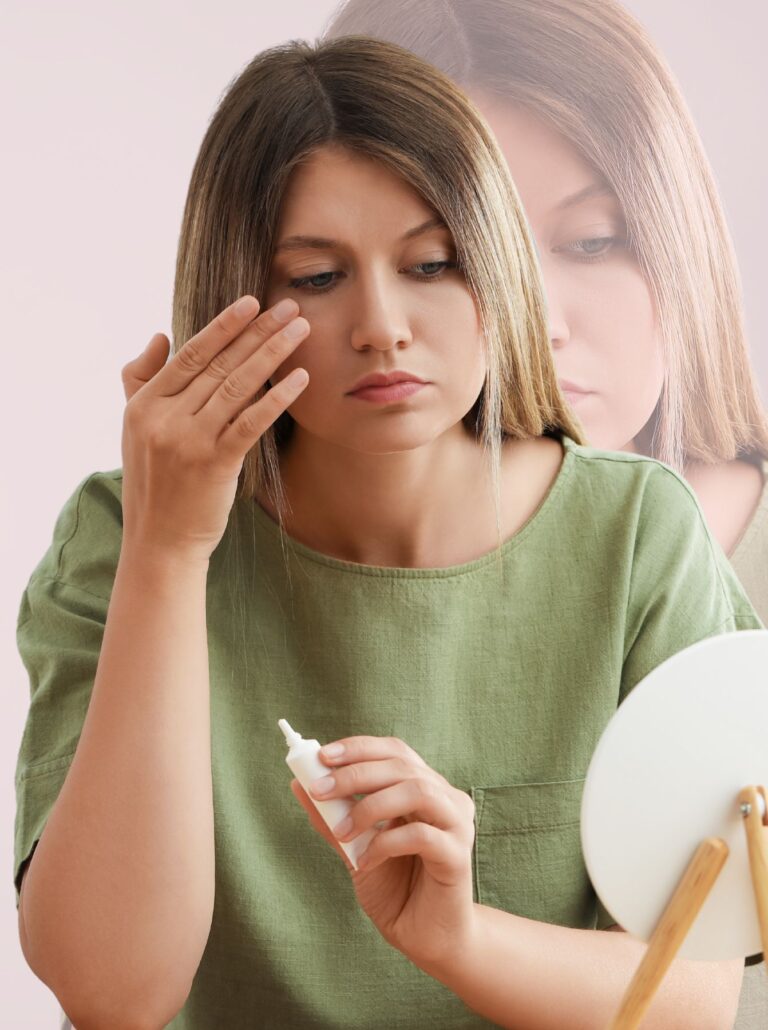Let’s get real about acne scars and learn the best ways to get rid of them for good!
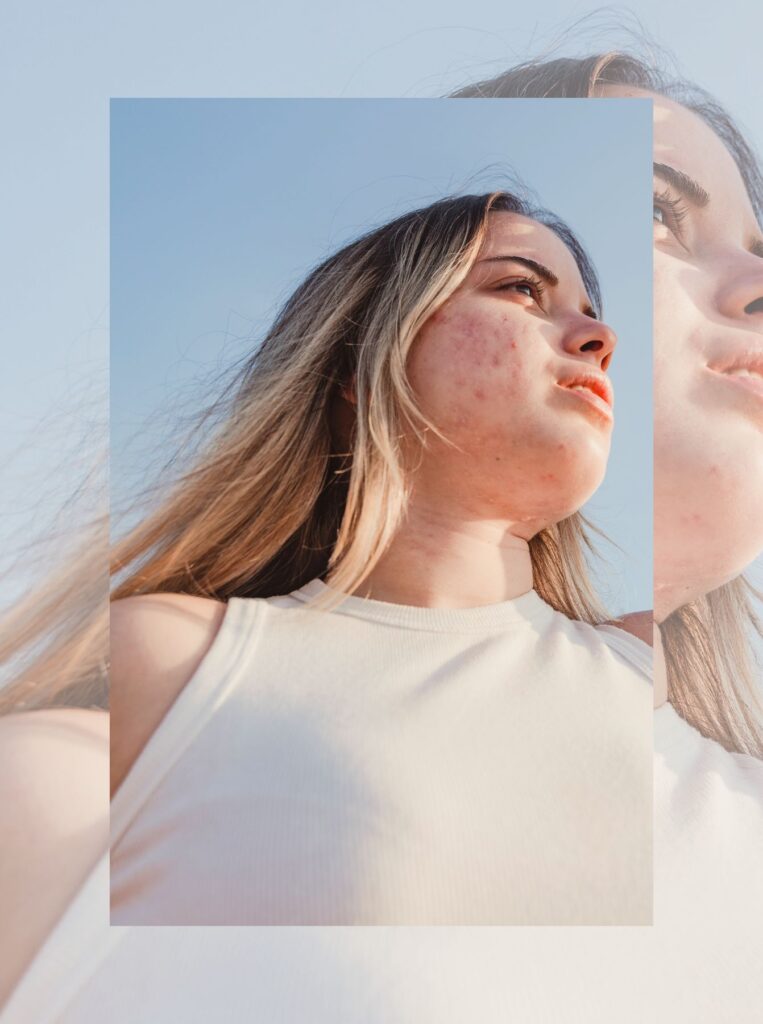
I’ve had acne for most of my life. Like, the kind where you don’t even want to look at yourself in the mirror because the breakouts are that bad.
Over time, even after I got the active acne under control, I was left with a battlefield of scars. Dark spots, red marks, indents, I’ve dealt with it all.
I mean, dealing with acne is hard enough, but when the pimples leave behind scars, it makes you feel really defeated and question the whole point of skincare.
You might have already tried a dozen miracle products that didn’t do anything, but all of that ends here.
In this post, I am sharing my no-fluff guide on how to treat acne scars.
These are the tips that actually work for me whenever I come out of a breakout phase (happens every year or so, lol, the perks of being a sensitive skin girlie).
But First, You Need To Know About Actives
Okay, so throughout this post, I am going to mention ‘active ingredients’ or ‘actives’ a lot. You should first know what that means, if you don’t already.
Actives are the ingredients in your skincare that do the heavy lifting.
They’re the ones that actively target a specific skin concern (like acne, dark spots, or scarring) and they’re backed by real science.
- Azelaic acid
- Glycolic acid
- Retinoids (like retinol or adapalene)
- Niacinamide
- Vitamin C
Alright, with that out of the way, we can get into the post now. Here you go!
How To Get Rid Of Acne Scars
1. Start With Moisturizer and Sunscreen
Okay, before you do anything at all, you need to pick up a good moisturizer, a sunscreen, and
Seriously, without these two products as part of your routine, don’t even bother picking up anything else.
A moisturizer protects your skin barrier, which is key to healing and fading scars.
And a sunscreen will protect you from UV exposer, which can make scars darker, slow down healing, and cancel out the work of your active ingredients.
My choice: CeraVe PM facial moisturizer and La Roche-Posay fluid sunscreen
2. Use Azelaic Acid If Acne Is Still Active
If you still get breakouts and have scarring at the same time, azelaic acid should be your first stop.
Azelaic acid is my go-to ingredient for acne and acne scars. It’s helped me through many painful acne breakouts, and I highly recommend giving it a go.
It’s one of those ingredients that does kind of everything. It calms inflammation, fades dark spots, unclogs pores, and kills acne-causing bacteria so so well.
Start with a 10% cream or gel, and use it once daily. You can bump up it upto 15–20% later on, if a doctor recommends it.
It works really really well on acne, redness, and scars.
Best time to use is at night after applying your moisturizer as a base (you can also mix it with your moisturizer and then apply).
The only drawback for me is the burning sensation that comes during intial days of using azelaic acid (though that’s normal with this ingredient).
But if the itching gets unbearable, wash off the product and don’t use. Make sure to patch test this in a small area before applying on full face.
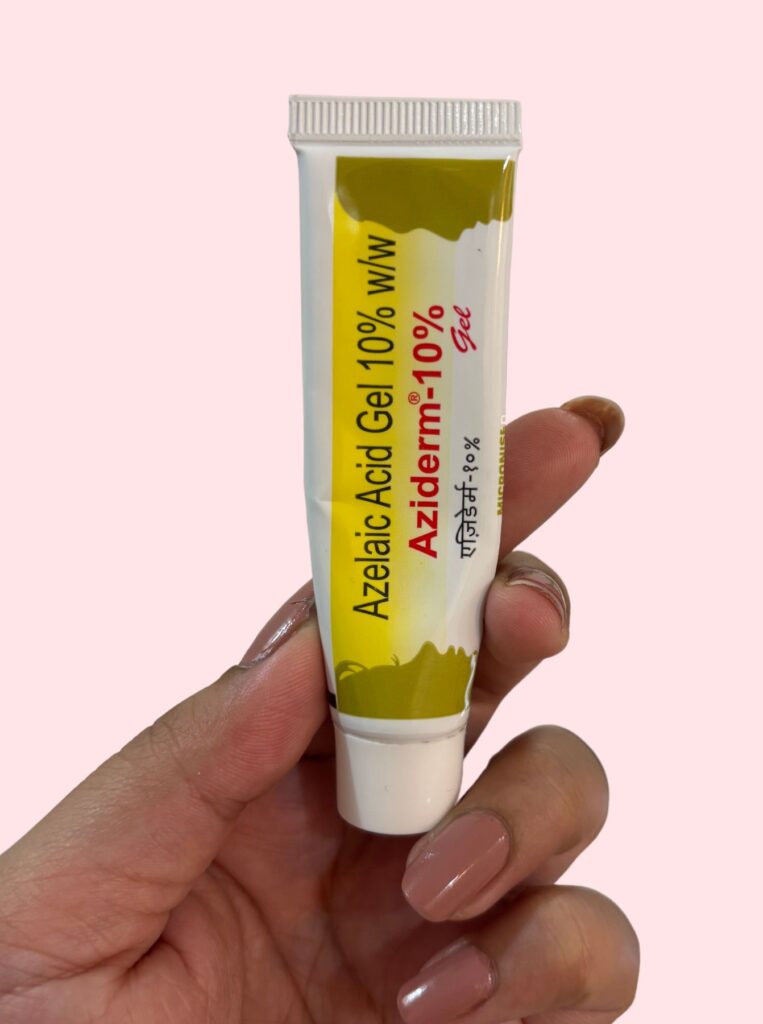
3. Use Glycolic Acid If Your Acne Is Not Active Anymore
If your acne isn’t active and you just need to deal with your scars, then glycolic acid is it for you.
This alpha hydroxy acid (AHA) helps exfoliate dead skin cells, improve cell turnover, and gradually fade pigmentation.
I have used this in past and loved the results. It brightened out my skin and smoothed out those rough patches from old breakouts without being harsh.
Use a 5–10% glycolic acid toner or serum 2–3 nights a week. If you can find a good cream formula, even better.
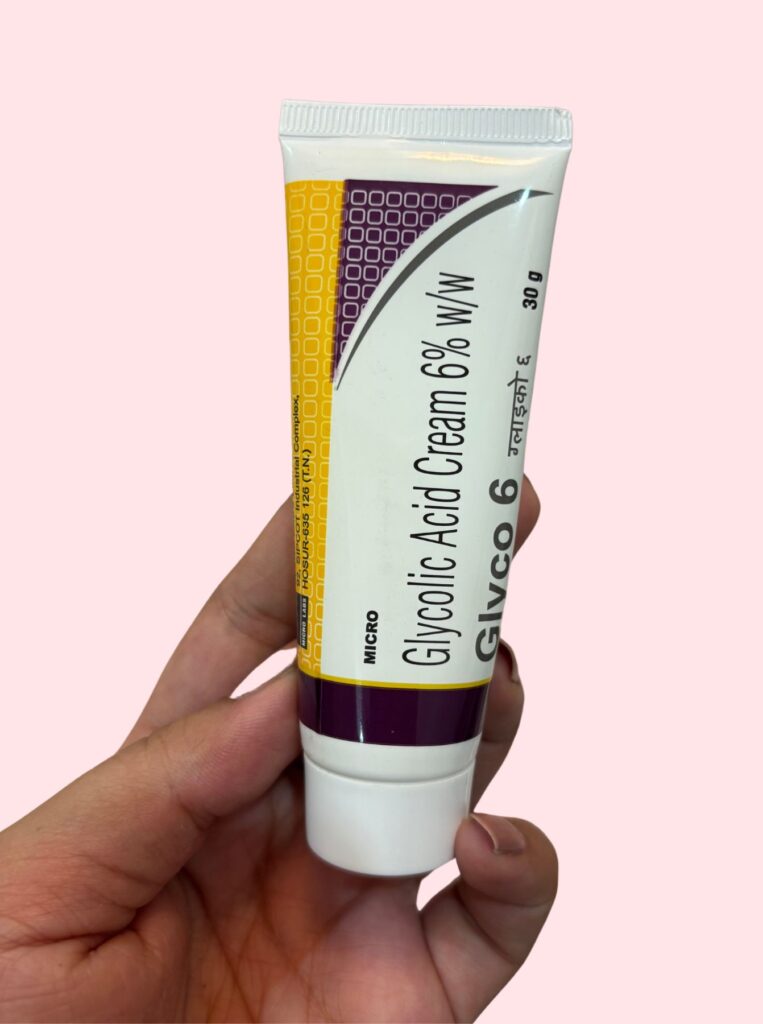
4. Go For Retinoids For Texture and Indented Scars
Retinoids are considered hands down one of the most researched and proven ways to treat acne and scarring.
Especially if you have textured and indentations on your face, then they can be a great choice.
But I never ever suggest using retinoids without consulting a dermatologist. The reason being the risky side effects, which include skin purging, peeling, and dryness.
Without an expert guiding you, it can be tricky to know when to stop.
But if you do decide to go ahead with retinoids, okie! Let’s talk about the benefits, because this is the IT ingredient afterall.
Retinoids increase cell turnover, boost collagen, fade dark spots, and help prevent future breakouts.
But be warned that it can take time to see results (though honestly, that’s true for mostly every skincare product). You’re supposed to stick it out with the side effects and then enjoy the beautiful results.
You can start with retinol (0.25% or 0.5%) or Adapalene gel, use it 1–2 nights a week and gradually increase.
5. Introduce Niacinamide Serum In Your Skincare Routine
Niacinamide is the chill friend your skin needs when you have scars.
It reduces inflammation, brightens dark spots, regulates oil, and strengthens your skin barrier.
Again, it won’t deliver overnight miracles, but it builds up benefits over time and pairs beautifully with harsher actives.
You can safely go for the Ordinary niacinamide serum once a day (and later make it two times once your skin is comfortable with the product).
It’s lightweight, gentle, and usually plays nice with other products (like retinoids or azelaic acid).
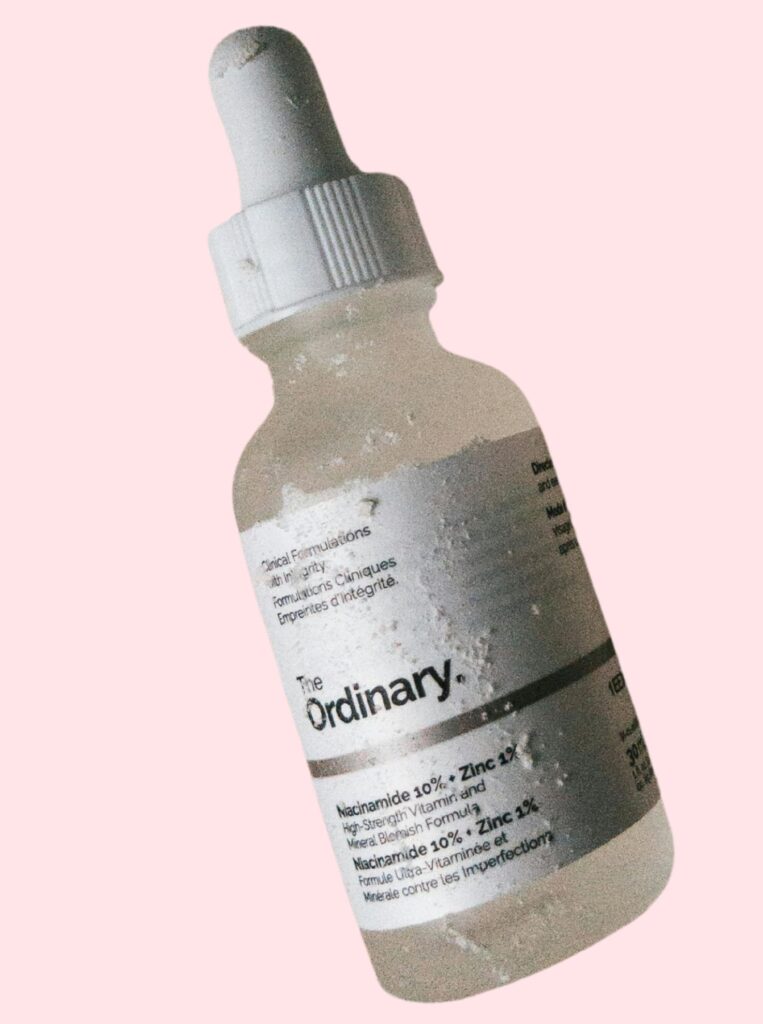
6. Use Vitamin C To Brighten Your Skin
Vitamin C is a powerful antioxidant that brightens dull skin, fades pigmentation, and protects against free radical damage.
It’s not a replacement for sunscreen, but it does enhance its effects.
So, if you’ve got acne marks alongwith dull skin, then this could be the right choice for you.
I use it most mornings under my SPF, and it gives my skin that such a lit look. It also helps fade lingering marks over time!
You might like: How To Have A Beauty Transformation – 12 Fun Steps
7. Never Overdo Your Actives
It’s super tempting to go full skincare scientist and throw retinoids, acids, and vitamin C all into one routine.
But please don’t. Your skin will rebel against so many active ingredients, and irritated skin doesn’t heal; it scars even more.
My rule is that I never use more than one strong active at a time. I am comfortable pairing niacinamide serum with one other active as this is actually a great comb.
But I know there are women who use two actives alternately and it works great for them. Example: vitamin C in the morning, retinoid at night. Or glycolic acid one night, retinoid the next.
Basically, you wanna start with less and stick to less.
Only pick the active that targets your particular problem and let it do its job without interference from other actives.
This patience will pay off, I swear.
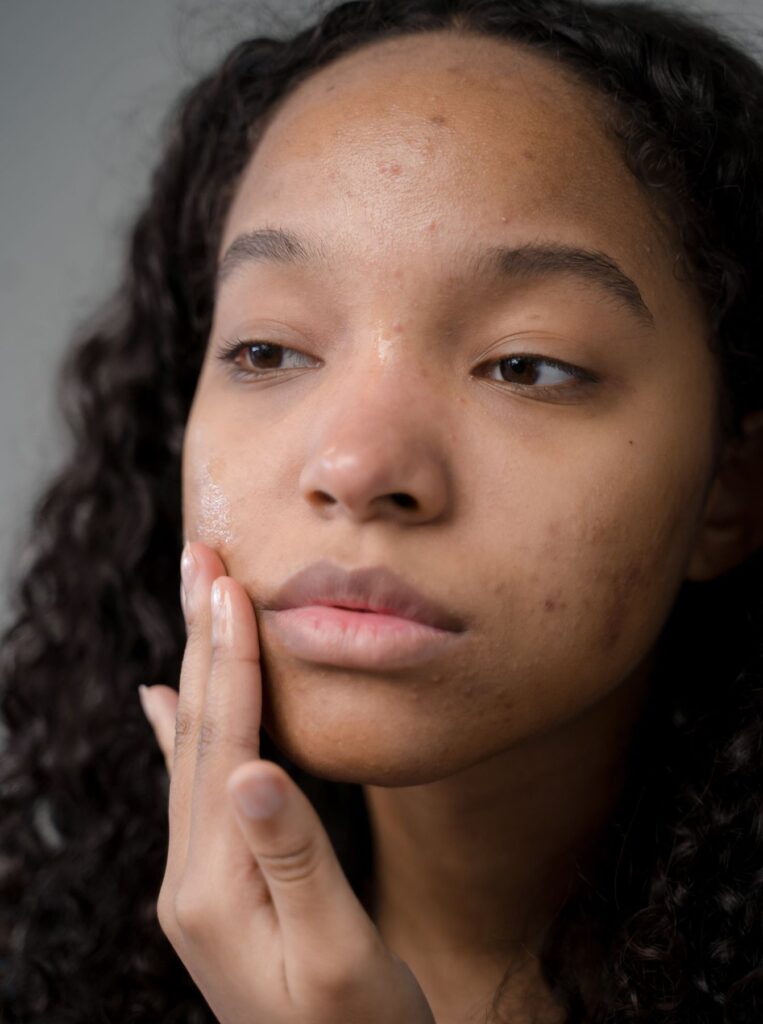
8. Go For Chemical Peels For Stubborn Marks
Chemical peels are like a skin reset. They remove the top layers of dead skin and can significantly reduce pigmentation, texture, and scarring.
I see so many beauty influencers doing chemical peels themselves, and that always makes me wary, because it’s a risky game.
Please don’t do this yourself. A professional is the only one who should be handling peeling.
The first time I had a glycolic acid peel at a derm’s office, I was shocked at how fresh my skin looked a week later.
I’ve also had salisylic acid peeling done for my acne, but that’s a story for another post.
Options: Glycolic, lactic, salicylic, TCA — your derm can recommend the best one based on your skin type and scar severity.
9. Get Microneedling Done Professionally
The term microneedling can sound a little scary if you’re new to it, but it’s actually one of the most powerful professional treatments out there for acne scars, especially indented or textured ones.
Microneedling (also called collagen induction therapy) is a professional skincare treatment where a device with tiny and sterile needles creates micro-punctures in your skin.
Yes, literal needles, but no need to freak out.
These little controlled ‘injuries’ trigger your skin’s natural healing response, encouraging it to make more collagen and elastin (a.k.a the building blocks of smooth bouncy skin).
There are tons of at-home dermarollers online, but real microneedling should only be done by a professional.
One wrong move through your untrained hands can cause great damage. So, please leave this to the professionals.
And yes, only microneedle after your acne is fully cleared. This shouldn’t be pursued when there are still pimples on your face.
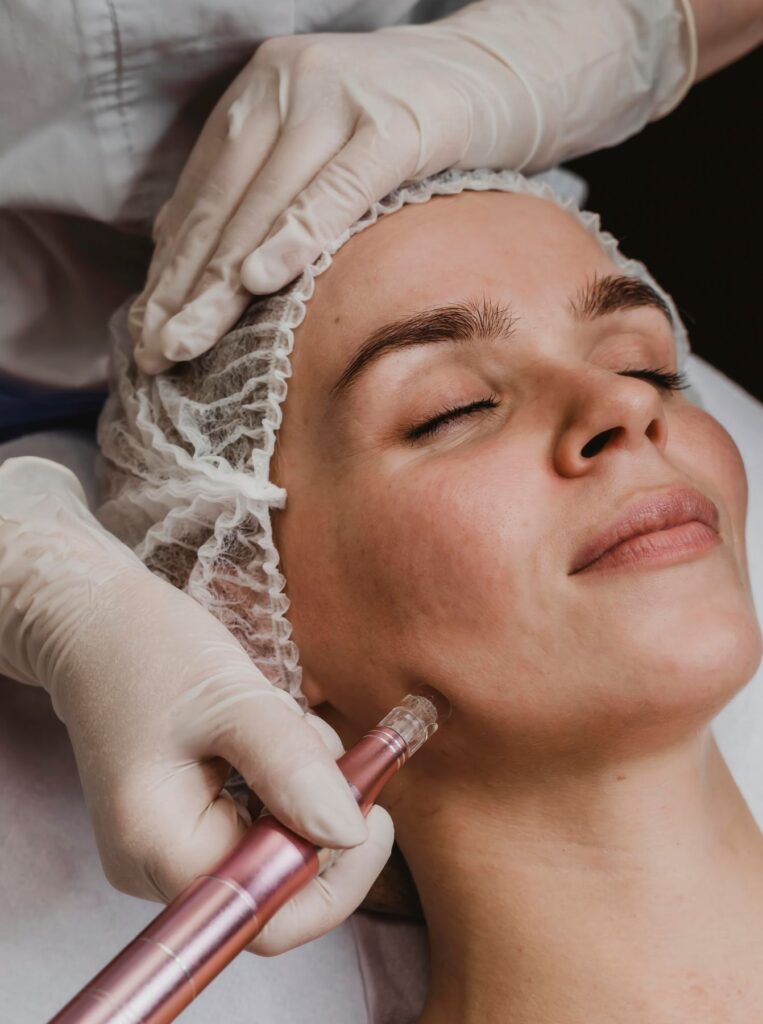
10. Use The Right Natural Remedies
This section is for those of you who trust home remedies more than the synthetic ingrediets.
I totally get the appeal of using green natural thingies on your face; it feels so so soothing and natural, right?
Well, I like using DIY stuff too, but I also know that not everything out of your kitchen is safe for your precious skin.
Some natural ingredients can help support healing, but there are also some that are a big no.
Let’s quickly clear up what’s a green-zone and what’s a no go for acne scars, shall we?
Home Remedies That Help Fade Acne Scars
- Aloe vera gel (best used fresh or 99% pure)
- Green tea extract or toner
- Honey (raw or manuka)
- Rosehip oil
- Licorice root extract
Popular Natural Remedies You Should Totally Avoid
- Lemon juice (super acidic)
- Toothpaste (it’s not for your face, sweetie)
- Baking soda (messes with your skin’s pH)
- Apple cider vinegar (can cause burns and major irritation)
- Coconut oil (highly comedogenic, which means it can clog pores and worsen breakouts)
Hope this will help you choose wisely!
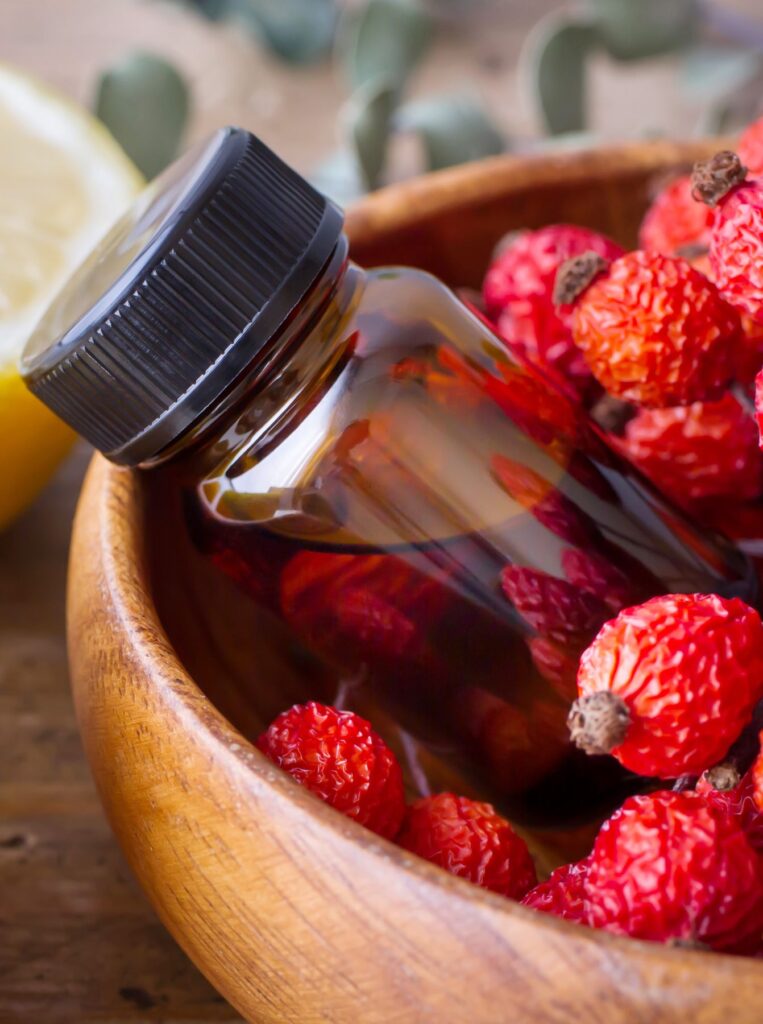
Tips To Avoid Acne Scars
So, we’re pretty much done with tips to get rid of acne scars, but I thought it’s important to give you some tips to actually prevent those scars in the first place.
Here are two best things you can do when you have active acne to prevent them from leaving marks behind:
11. Ice Your Breakouts to Prevent Scarring
A little DIY trick that works wonders is to ice your pimples, especially the cystic ones.
Icing reduces inflammation and swelling, meaning less trauma to the skin, and less chance of scarring.
I wouldn’t suggest going for an ice roller for this. Your troubled skin may not take likely to the movement and there’s chance of there being bacteria on the product even after you clean it.
I just like to grab an ice cube, wrap it in a paper towel, and hold it on a painful zit for 5–10 seconds a few times a day (especially in the morning and at night before doing skin treatment).
It genuinely helps stop scarring before it happens, trust me.
12. Stop Touching Your Face
I know, I know. Popping that whitehead is super satisfying.
But every time you pick, squeeze, dig into your skin, or even touch your face out of habit, you create more damage, and way deeper scars.
I am sure I am not the first person to be telling you this, so listen closely. Stop picking at your skin, especially when you’ve got active pimples.
One good way to avoid this would be to use hydrocolloid patches on your pimple. Can’t touch it if it’s covered, right?
You can also apply a sulfur spot treatment, or just walk away from the mirror (I’ve literally had to do this mid-breakout).
Just let your skin be, breathe, heal, and let the treatments do their thing.
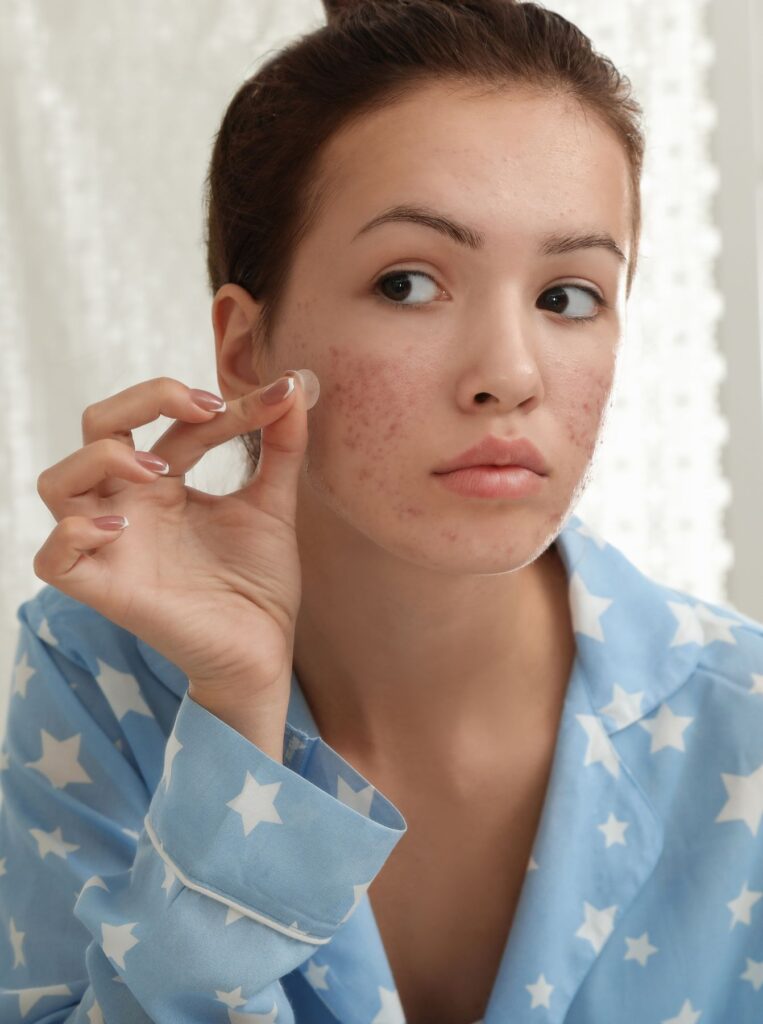
At Last, Just Be Patient
This is the hardest part, because acne scars don’t fade overnight.
Even with the best routine, visible improvement can take 8–12 weeks, and sometimes even longer.
Take progress photos once a month, and know that your skin is healing, even if it doesn’t feel like it every day.
If you’re here reading this, trying to understand your skin and give it what it needs, you’re already ahead.
Healing acne scars is a journey, not a quick fix. But real, visible change is possible.
What’s worked for me may not work for everyone, but I hope this gives you a head start.
Be gentle with your skin. Stay consistent. And above all, don’t give up.
Got your own favorite scar-fading tip? Share it in the comments. Let’s help each other glow up!
